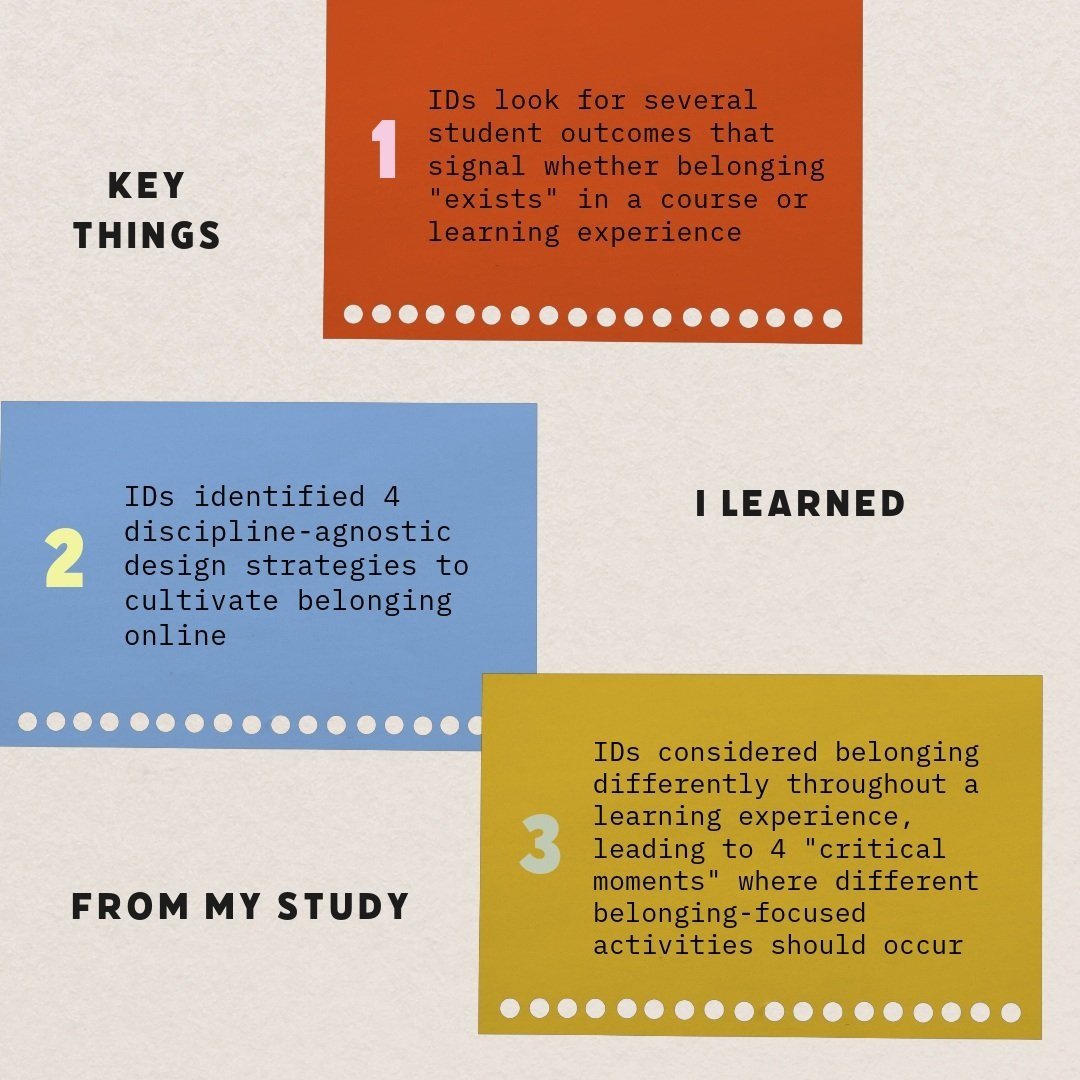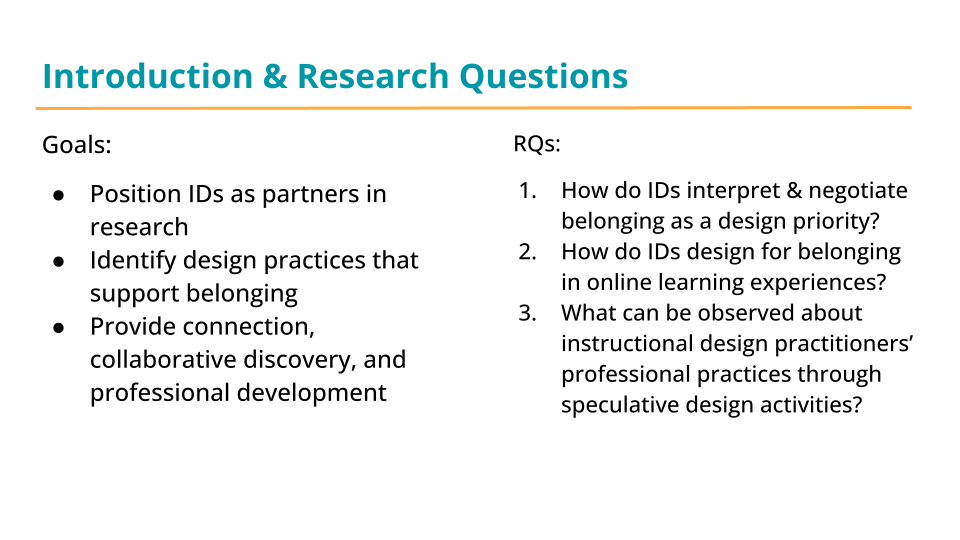Designing for Belonging: Translating Original Research into Practice
Challenge: Online learners struggle with persistence and engagement, with research showing that sense of belonging is a critical factor. But how do designers, who often have limited control over implementation, create experiences that foster genuine connection and community in digital spaces?
My Approach: For my dissertation, I conducted an innovative mixed-methods study combining focus groups with hands-on design activities. Think “design charrette light.” Rather than just asking instructional designers about belonging, I had them create learning design blueprints and reflect together about their design decisions. This "making while thinking" approach revealed insights that traditional interviews couldn't capture.
Research Innovation:
Methodological contribution: Developed a participatory design research method that combines qualitative discussion with real-time artifact creation, allowing participants to demonstrate their professional thinking through both words and design choices.
Analytical framework: Used Voros's Futures Cone to map design solutions from immediately implementable to aspirational, helping identify which belonging strategies could be deployed now versus those requiring systemic change.
Key Finding - The "Moments of Belonging" Framework
My analysis revealed four critical phases where belonging expectations are established:
Preparation: Pre-experience design work that sets the foundation
Beginning: Establishing norms and expectations through learner agency
Maintenance: Sustaining connection through intentional communication and shared responsibility
Aftercare: Creating pathways for continued engagement and connection
Impact & Applications: This framework extends beyond formal education to any digital experience where human connection matters, such as remote team onboarding, customer communities, training programs, or digital product experiences. The research demonstrates how designers can strategically influence belonging even when they don't control final implementation.
Companion Materials
View some of the artifacts that resulted from this work below

A shareable design blueprint for how to capitalize on moments of belonging while designing a student facing experience, created with Adobe Express (2024)

A social media distillation of dissertation findings. Created with Adobe Express and shared via LinkedIn (2024)

Sample Slide: Research Goals & Questions (2024)